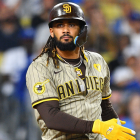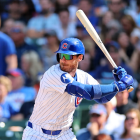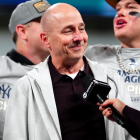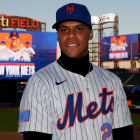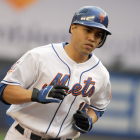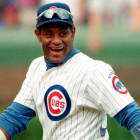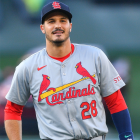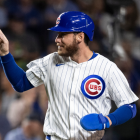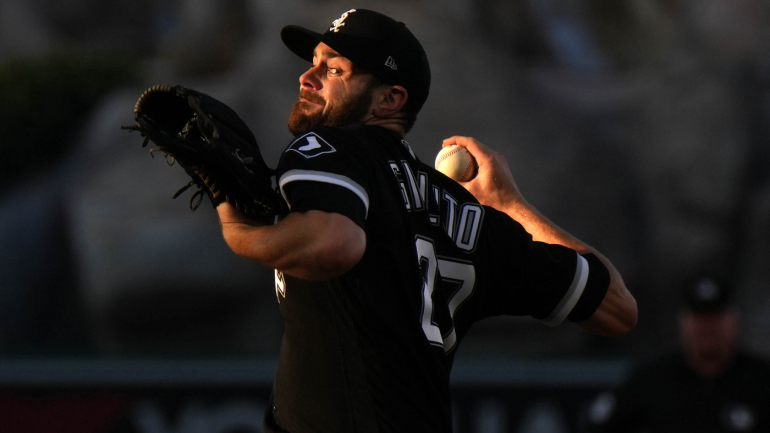
The Los Angeles Angels and Chicago White Sox agreed to the biggest trade of the month on Wednesday night: a four-player swap that sent right-handers Lucas Giolito and Reynaldo López out west in exchange for catcher Edgar Quero and left-hander Ky Bush. The teams officially announced the deal.
We here at CBS Sports are quick to pass judgment. So, as has become tradition, we're bringing back our "trade grades" series for the deadline. We do request that you treat this for what it is: a snapshot in time of what we thought about the trade when it was made. These things don't always age well; such is the reality of player evaluation. It beats worrying about life after bees, doesn't it?
Let's begin by restating the terms of the deal:
- Angels receive: RHP Lucas Giolito, RHP Reynaldo López
- White Sox receive: C Edgar Quero, LHP Ky Bush
Now, let's get to the gasbaggery.
Angels grade: B
News broke early Wednesday night that the Angels no longer intended to listen to offers on two-way star Shohei Ohtani and would instead buy. Hours later, general manager Perry Minasian confirmed as much by obtaining Giolito, arguably the best player who will be dealt this deadline, as well as López. Both will qualify for free agency at season's end, classifying them as pure rentals.
Giolito, 29, has recovered from a down season last year. In his first 21 starts, he's amassed a 3.79 ERA (116 ERA+) and a 3.12 strikeout-to-walk ratio. It became common knowledge that he liked to elevate his low-to-mid-90s fastball before unleashing his version of a trompe l'oeil: a backspinning changeup that caused batters lots of trouble despite being thrown higher than the typical cambio. Giolito has subverted expectations this season, albeit to a small degree, by throwing his slider as his main secondary offering. It's not a huge difference, all things considered, but the results have been encouraging.
Lucas Giolito's 3Ks in the 3rd.
— Rob Friedman (@PitchingNinja) July 23, 2023
6Ks thru 3. pic.twitter.com/zMonPiRALq
López, 29, is better than his bloated ERA indicates. He's taken well to the bullpen over the last three years after trying (and failing) to make it as a starter: in more than 120 appearances, he's compiled a 3.38 ERA (125 ERA+) and a 3.70 strikeout-to-walk ratio. López is all upper-90s fastballs and upper-80s sliders these days. Both miss bats and suppress quality of contact. We suspect the Angels will have him toss more bendy things moving forward: he's currently throwing more than 60% heaters. Balance is important.
Reynaldo López's 3Ks in the 10th. pic.twitter.com/Hvo5VYKY9x
— Rob Friedman (@PitchingNinja) July 6, 2023
Minasian paid a hefty price to add Giolito and López, surrendering what may equate to two of his top five or six prospects, including the No. 1 player in the system. You can argue that Quero had less value to the Angels than other organizations because he was blocked by Logan O'Hoppe (coincidentally, O'Hoppe's presence in the organization can be credited in part to him being blocked by J.T. Realmuto during his time in the Phillies organization), and you can also argue that, by deciding to keep Ohtani, the Angels should go all-in. Fair enough. We're just not sure it's going to be enough to get them where they want to go. (Hence the B grade, though you can bump it to an A if you feel more optimistic about their chances.)
The Angels entered Thursday situated behind a trio of American League East teams in the hunt for the third wild-card spot. Maybe those teams cancel out to some degree, but it's harder for that to be the case with the balanced schedule. What's more is that the Angels are a bad series away from falling behind the Seattle Mariners and Cleveland Guardians, too. Their margin for error is extremely narrow, and their capacity to upgrade elsewhere on the roster might be, too. That's not going to stop Minasian from trying, of course, but there are more buyers than sellers and scarcity tends to drive prices up, not down.
Still, we get it. If Ohtani leaves at season's end, the Angels are going to have to enter a long-term rebuild anyway. Why not take some big swings now and see how the chips fall the rest of the way?
White Sox grade: A
White Sox general manager Rick Hahn's deadline is just getting started. He's all but certain to move several more veterans in the coming days, including right-hander Lance Lynn. Still, Hahn might have already made his best deal. In exchange for two pitchers on the cusp of free agency, he received a definitive top-100 prospect and an interesting lefty who could debut next season.
Exit stage right.
— MLB Pipeline (@MLBPipeline) May 10, 2023
Third-ranked @Angels prospect Edgar Quero clubs his first home run at Double-A for the @trashpandas. pic.twitter.com/5u9pjy6aUA
Quero, 20, is a switch-hitting backstop who skipped from Low- to Double-A without even a pitstop at High-A. He hasn't posted the monster statistics he did last season, when he batted .312/.435/.530 with 17 home runs in 111 contests, but he's held his own. Young catchers are a risky lot, but the White Sox have to feel good about Quero being safer than the average bear because of his play at Double-A. Indeed, he's held his own despite the aggressive assignment, batting .246/.386/.332 with more walks than strikeouts in 70 games.
Quero's game is tilted toward the offensive end. He has a chance to produce average or better marks across the triple slash categories, with his on-base skills standing out at this stage in his development. Quero is a below-average defender, but his youth and bat give him a wider berth on that front. He doesn't have to turn into prime Yasmani Grandal behind the dish in order to have dibs on becoming the White Sox's catcher of the future.
The first Ky Bush strikeout of 2023 is a HAMMER. 🔨 pic.twitter.com/obnKdnTxSG
— Rocket City Trash Pandas (@trashpandas) June 22, 2023
Bush, 23, was a second-round pick in 2021 by way of Saint Mary's. Some scouts have expressed the belief, even back then, that he has mid-rotation upside. He's yet to make good on that promise, having been limited this season by injuries to just eight appearances (six at the Double-A level). In those six games, he's accumulated a 5.88 ERA and a 2.36 strikeout-to-walk ratio.
Bush has touched into the mid-90s with his fastball in the past. His best pitch, though, is his slider. (He also throws a quality changeup and curveball.) Bush has struggled to throw strikes consistently this season, but provided he regains the feel with greater repetitions, he has a chance to slot in at the back of the Chicago rotation as soon as next season. There is one catch, and that's how the White Sox will likely have to monitor his workload: he's topped the 100-inning mark once as either a collegiate or a professional, with that coming last year.









